
views
- To add the Spotify widget, long-press a blank area of the Home screen, tap Widgets or +, then choose the Spotify widget.
- Even if you don't add the widget to your phone's Home screen, you'll still see playback controls on the lock screen.
- If the widget is missing from the lock screen, make sure "Devices Lock Screen" is turned on in Spotify, and that lock screen notifications are enabled.
On iPhone & iPad
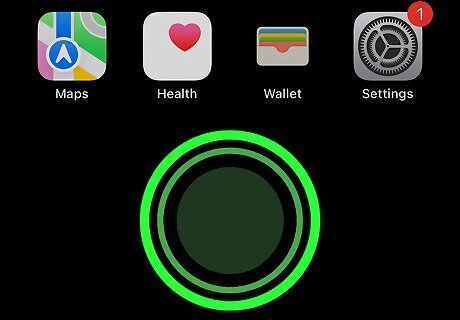
Tap and hold an empty space on your Home screen. To add the Spotify widget to your Home screen, long-press any area of your Home screen where there are no icons or widgets. Release your finger when the icons begin to jiggle. Spotify automatically displays a playback controls widget on your lock screen, even if you don't add the Spotify widget to your Home screen. See this method to learn what to do if you don't see the playback widget on your lock screen. If you'd rather add the Spotify widget to Today View instead of your Home screen, you'll need to do something a little different to get started: Swipe right on the Home screen to switch to Today View. Scroll to the bottom of your widgets and tap Edit.

Tap +. You'll see this plus symbol at the top-right corner of the screen. This option appears on both the Home screen and in Today View.
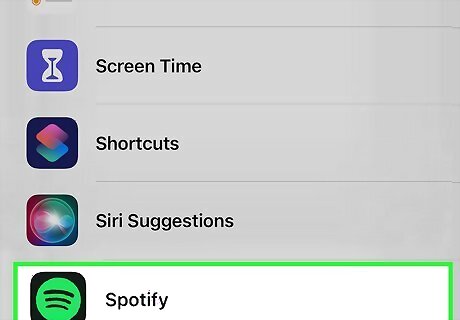
Scroll down and tap Spotify. You'll see it in the alphabetized list of widgets at the bottom of the screen.

Select a Spotify widget. There are two options for Spotify widgets: One is a smaller square displaying an image and the name of the song or podcast you listened to most recently, and the other is a wider tile showing a longer list of recently played tracks.
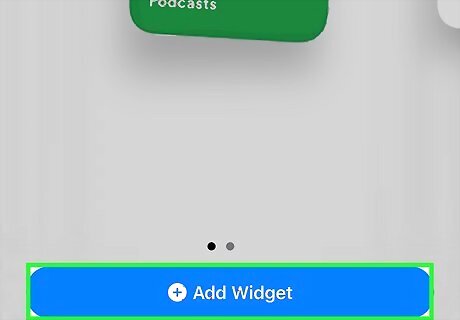
Tap +Add Widget. You'll see this blue button at the bottom of the screen. This places the selected widget at the top of your Home screen, or at the bottom of your widget list in Today View. If you want to move the widget elsewhere on the Home screen, just drag it to a new location.
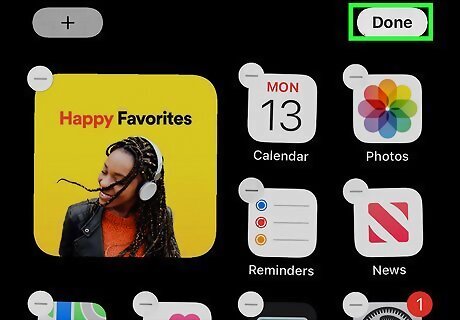
Tap any blank space to save your changes. The icons will stop jiggling and your Spotify widget will remain in place. To remove the widget from your Home screen, tap and hold the widget, select Remove Widget, and then tap Remove. To remove the widget from Today View, tap Edit at the bottom of Today View, tap the - on the Spotify widget, then tap Remove.
On Android
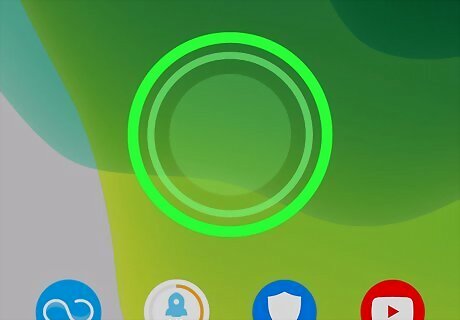
Tap and hold a blank area of your phone or tablet's Home screen. Whether you're using stock Android or a Samsung Galaxy, adding the Spotify widget to your Home screen is simple. On Android, the Spotify widget displays play controls right on your Home screen. This makes it easy to pause, play, rewind, and fast-forward from your Home screen without switching to the Spotify app. Even if you don't add a Spotify widget to your Home screen, you'll still be able to see Spotify's playback controls widget on your lock screen. If you don't see playback controls on the lock screen, see the troubleshooting method.
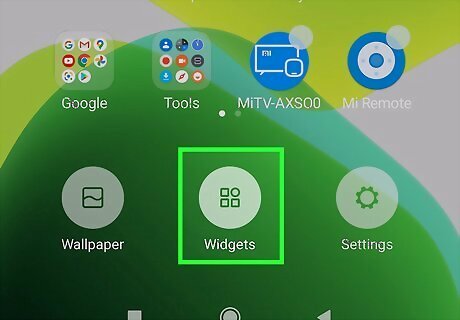
Tap Widgets. You'll see this icon at the bottom of the screen on Samsung Galaxy models, and near the center of the screen on other models.

Tap and hold the Spotify widget. You can search for the widget using the search bar at the top, or scroll through the list until you see Spotify.
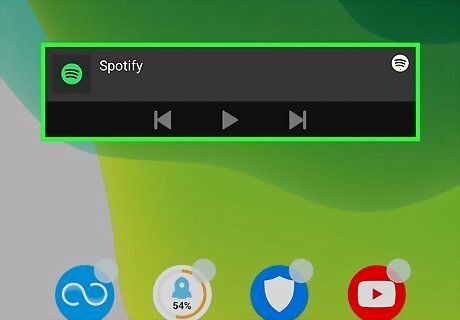
Drag the Spotify widget to your Home screen. When you release your finger, the Spotify widget will be added to your Home screen. To delete the Spotify widget, tap and hold the widget, then tap Remove from Home (Samsung Galaxy) or drag the widget to Remove (other Android models).
On Windows
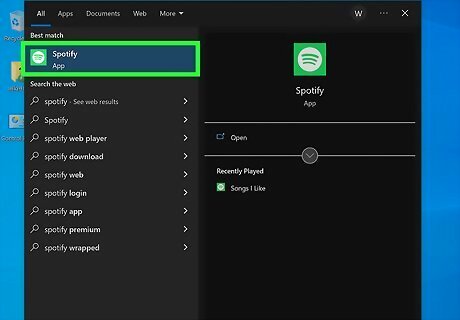
Open the Spotify app on your PC. Want a Spotify widget on your Windows desktop? While you can't really add widgets like on a phone or tablet, there's a way to temporarily pin a widget-like version of Spotify with playback controls to your desktop. You'll just need to have the version of Spotify that comes from the Microsoft Store. To get the Microsoft Store version of Spotify: Open the Microsoft Store app in your Start menu. Search for and select Spotify. If the button says Free, you don't have the right version. Uninstall Spotify from your PC. Then, return to this window and click Free to get the right version. If you see Open or Update on the button, you already have the right version of Spotify.
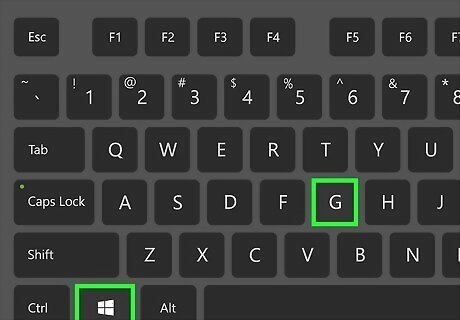
Press the Windows Key + G at the same time. This keyboard shortcut opens the Game Bar, which supports widgets. At this point, you may already see a Spotify widget on the screen. If you do, skip to step 5.
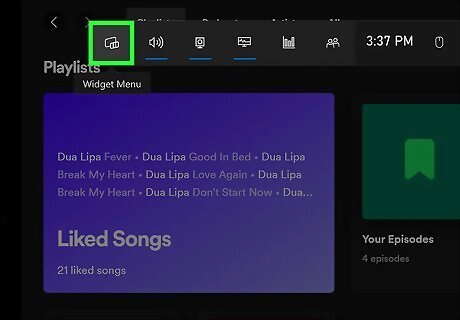
Click the Widget menu on the Game Bar. The Widget menu is the icon of a computer screen with three cubes. When you hover your cursor over the right icon, you'll see "Widget Menu" below the cursor.
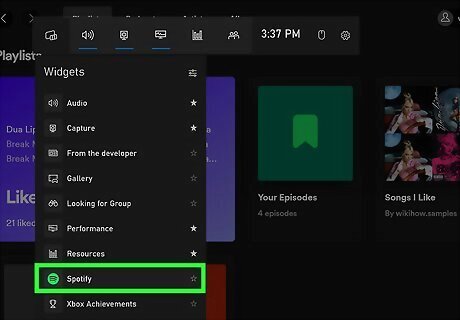
Click Spotify on the menu. This loads the Spotify widget into the side panel. You should now see the Spotify widget in the left sidebar.
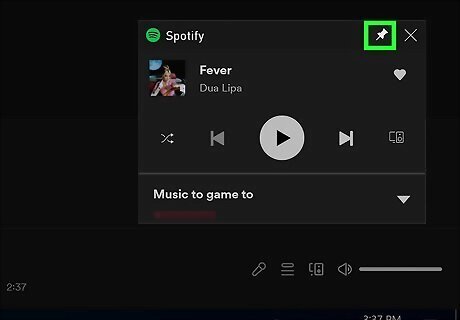
Drag the widget to the desired location and click the pushpin icon. For example, if you want to keep the playback controls at your screen's top-left corner, drag the widget to the top-left, then click the pushpin icon. This adds the Spotify widget to your Windows desktop. If you need to reposition the widget, press Windows key + G to bring up the game bar, then drag the widget anywhere. To remove the widget, press Windows key + G, then click the X on the widget. The widget will also disappear if you force-close Game Bar or restart your PC.
Troubleshooting Spotify Lock Screen Problems
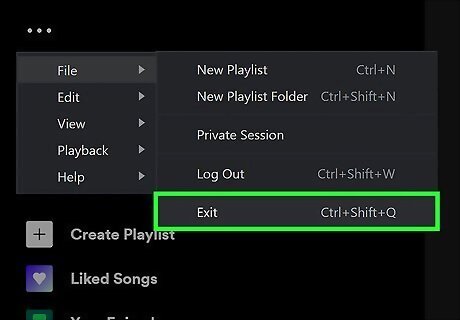
Force-close and reopen Spotify (all devices). Even if you don't add the Spotify widget to your Home screen, you should see a playback widget on your lock screen when listening to Spotify with the screen locked. If you don't see playback controls on the lock screen, force-close the app on your Android, iPhone, or iPad, then reopen it. Start playing a song and then lock your screen to see if the widget reappears.

Enable "Devices Lock Screen" in Spotify (iPhone & iPad). This feature ensures you'll be able to see the Spotify widget on your iPhone or iPad's lock screen when you're playing Spotify on other devices, such as AirPlay and Bluetooth speakers. You'll also get a volume slider, which can come in handy. Open the Spotify app and tap the gear icon at the top-right. Tap Devices. Toggle on the "Devices Lock Screen" switch.
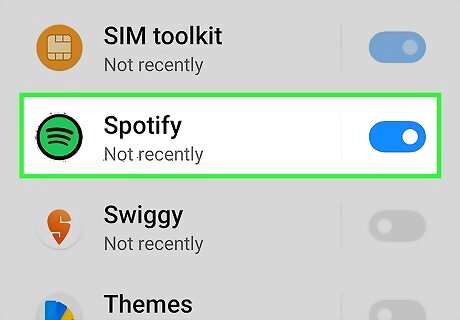
Ensure Spotify can show notifications on the lock screen (all devices). If you still don't see Spotify on the lock screen, lock screen notifications may be disabled for Spotify. Here's how to check: iPhone/iPad: Open the Settings app. Scroll down and tap Spotify. Make sure the "Allow notifications" slider is set to On. If there's no checkmark under "Lock Screen," tap the box to turn the feature on. Android: Open Settings. Tap Notifications or Apps & Notifications (the steps will be different on most Androids, but you're looking for your notification settings per app). If you don't see a list of apps, tap App settings, App notifications, or similar. Tap Spotify. Make sure the option to hide notifications from the lock screen is not enabled. You may need to tap Advanced to find this option.
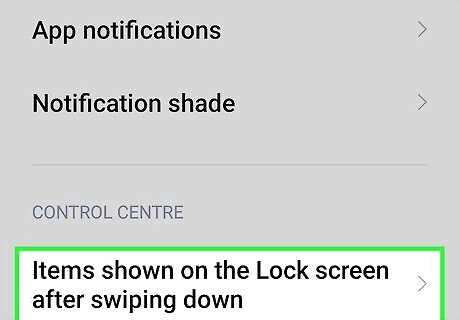
Make sure lock screen notifications are on (Android only). If you've disabled lock screen notifications system-wide on your Android, you won't see the Spotify playback widget on the lock screen. Here's how to check: Samsung Galaxy: Open the Settings app. On Samsung Galaxy OS 13 and later, go to Notifications > Lock screen notifications, and make sure "Hide Content" is turned off. On OS 12, go to Lock screen, and make sure the switch next to "Notifications" is turned on. Tap Notifications, and make sure "Hide Content" is turned off. Stock Android: Open your Settings and tap Apps and notifications. Tap Notifications. Tap Notifications on lock screen or On lock screen. Choose Show alerting and silent notifications or Show all notification content.
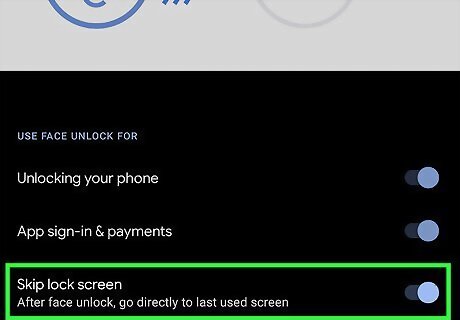
Disable "Skip Lock Screen" on Google Pixel devices (Android only). If you have a Google Pixel phone with Face Unlock, the Spotify widget may not appear on your lock screen if "Skip Lock Screen" is enabled. To disable this feature: Open the Settings app. Tap Security. Tap Face & Fingerprint Unlock. Tap Face Unlock. Turn on Skip lock screen.
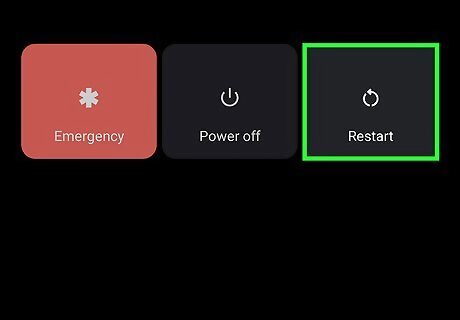
Restart your Android or iPhone. If you still don't see the Spotify widget, a simple reboot might fix the problem. Turn off your Android, iPhone, or iPad, and then turn it back on.
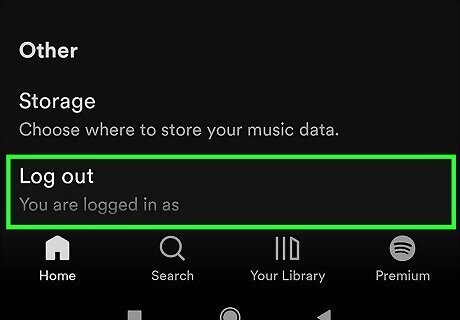
Log out of Spotify and log back in (all devices). If the widget still won't show up on your lock screen, open the Spotify app, tap the gear icon at the top-right corner, and then tap Log out at the bottom of the menu. Once you're signed out, enter your login information to sign back in.
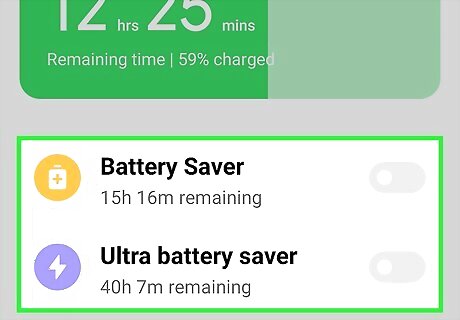
Disable lower power mode or battery saver mode (all devices). If your phone or tablet is low on battery, it may automatically switch into a low-power mode to preserve what's left. This can prevent the Spotify playback widget from appearing on your lock screen, especially if you have an always-on display. iPhone/iPad: Open Settings and tap Battery. Toggle off "Lower Power Mode." Android: Open the Settings app and select Battery. Disable "Battery Saver" or "Power Saving Mode," depending on your phone or tablet.
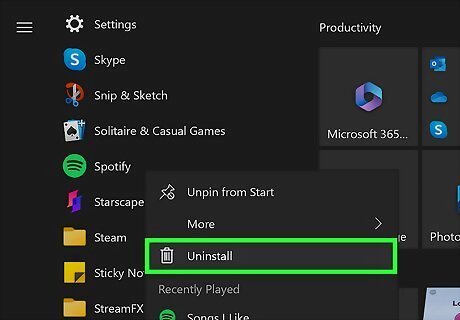
Uninstall and reinstall Spotify (all devices). Still can't see the Spotify playback controls on the lock screen? Try deleting the Spotify app from your phone or tablet and then reinstalling it from the App Store (iPhone/iPad) or Play Store (Android). This final step will hopefully return the widget to your lock screen.




















Comments
0 comment